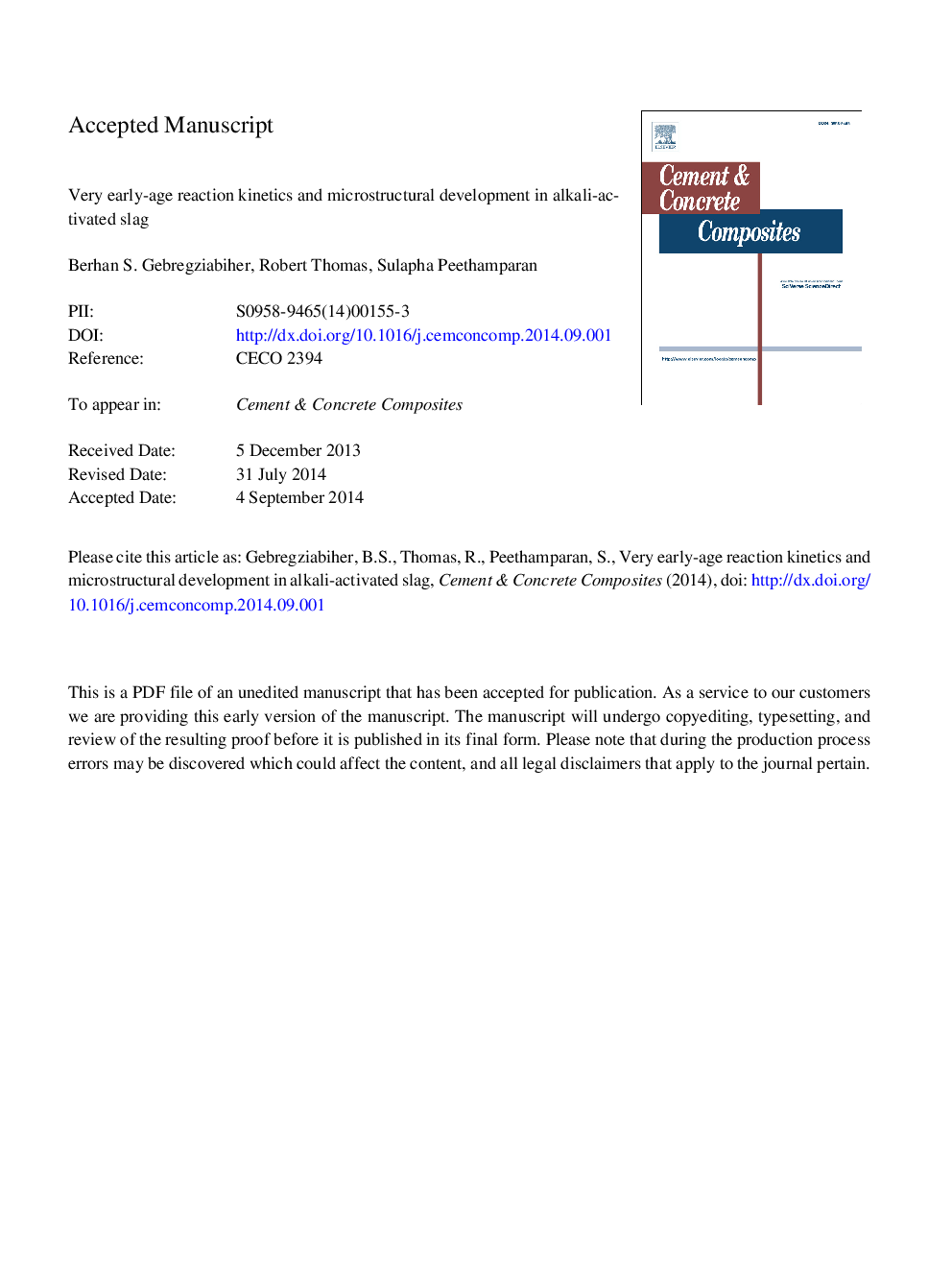| Article ID | Journal | Published Year | Pages | File Type |
|---|---|---|---|---|
| 7884167 | Cement and Concrete Composites | 2015 | 34 Pages |
Abstract
The early age reaction kinetics and microstructural development in alkali-activated slag binder are discussed. In-situ isothermal calorimetry was used to characterize the reaction progression in sodium hydroxide and sodium silicate-activated slag binders cured at ambient temperature. Microstructure and strength development were monitored to correlate the heat evolution with the property development. In-situ isothermal calorimetric data for sodium hydroxide-activated systems exhibited only one major heat evolution peak with no dormant period. Sodium silicate-activated pastes exhibited multiple peaks and extended dormant periods. Microstructural evolution, monitored using BSE-SEM, showed rapid product formation on the surface of slag grains in sodium hydroxide-activated systems, forming thin reaction shells-the thickness of which was related to the activator concentration-and leading to diffusion controlled hydration at a very early stage. Sodium silicate-activated systems exhibited slow and progressive product formation, predominately nucleated from the solution. These results are supported by electron mapping and electron dispersive X-ray spectroscopy.
Related Topics
Physical Sciences and Engineering
Engineering
Industrial and Manufacturing Engineering
Authors
Berhan S. Gebregziabiher, Robert Thomas, Sulapha Peethamparan,
